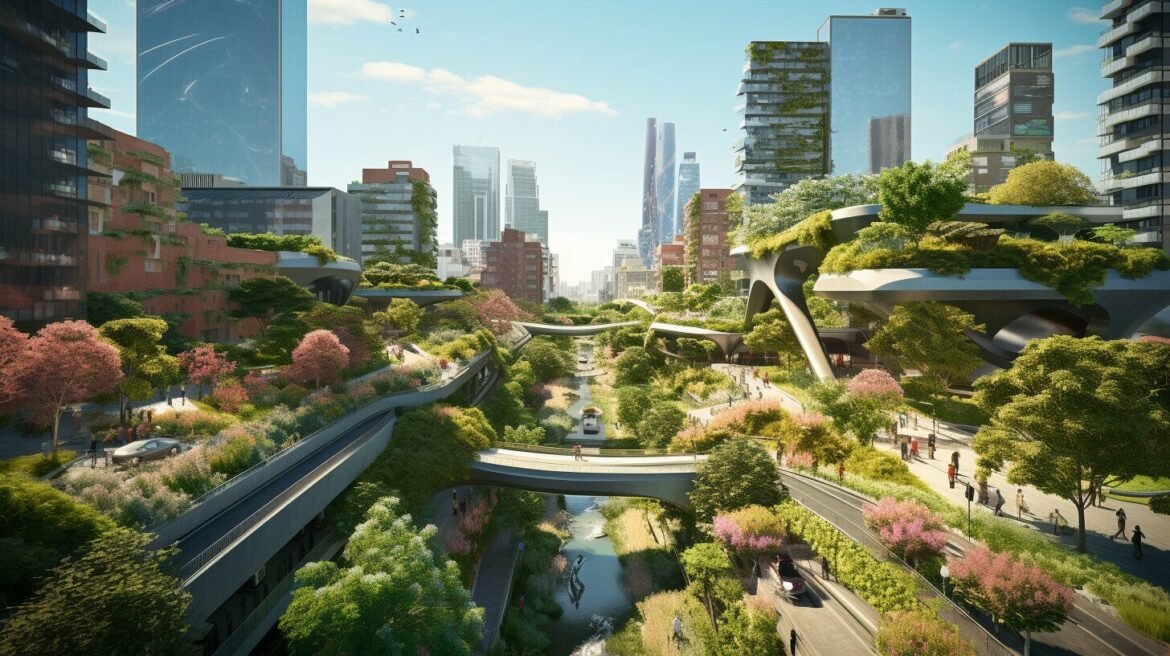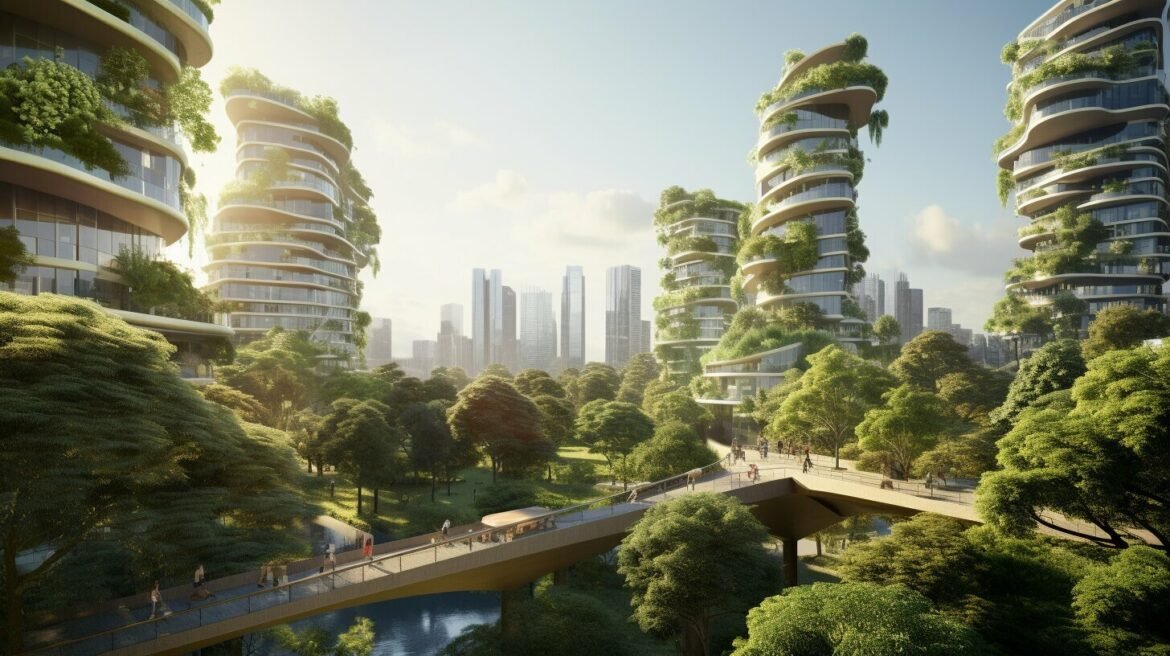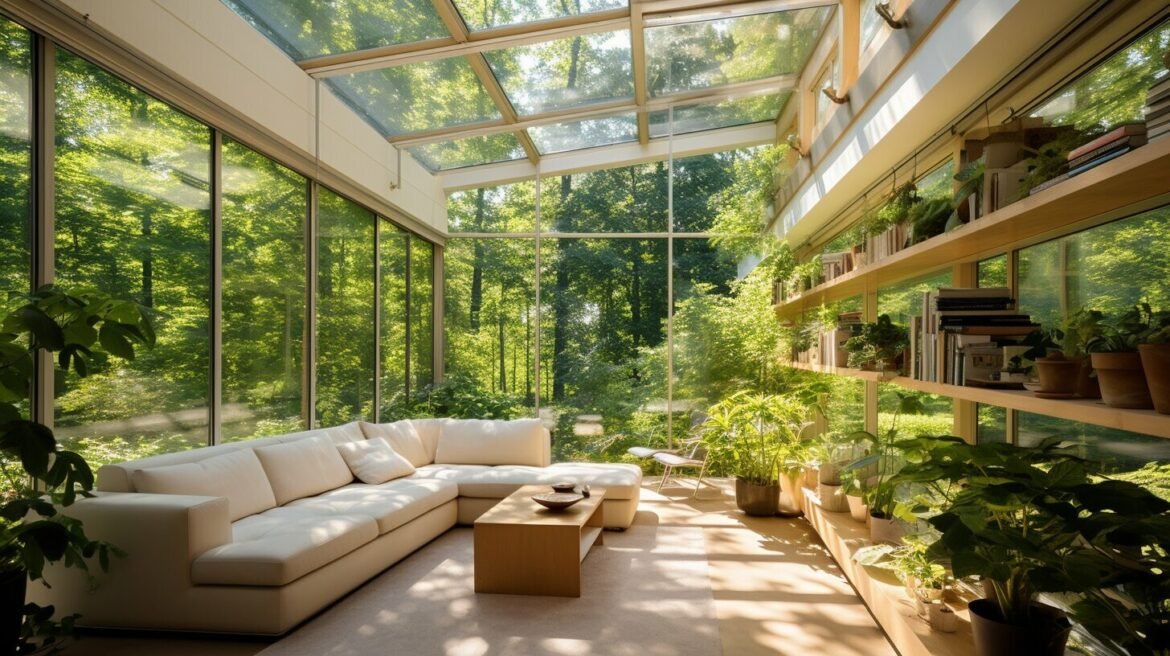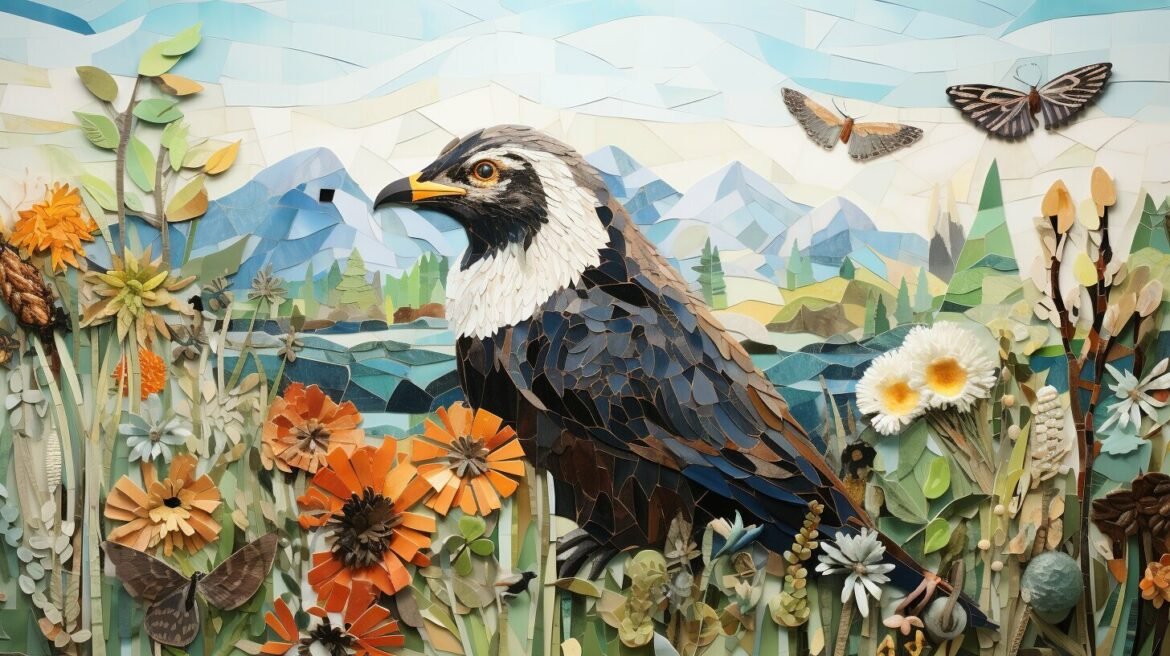Connect

- jackie@constructive-voices.com
- Linkedin Constructive Voices Radio Page
- Twitter Constructive Voices Radio
 play_arrow
play_arrow
Constructive Voices Radio The conversation is building

Have you ever wondered how architecture can promote biodiversity? There is a growing trend in the design industry to create nature-positive buildings that prioritize environmental sustainability and enhance biodiversity. Nature-positive architecture considers the ecological impact of buildings and aims to create structures that work in harmony with nature. Here is how architecture increases biodiversity.
Over the years, human activities have caused significant harm to the environment and resulted in a decline in biodiversity. However, through thoughtful design, architecture can help reverse this trend by creating habitats for wildlife, improving air quality, and reducing carbon emissions. In this article, we will explore how architecture can increase biodiversity and foster a healthier and more sustainable environment.
Biodiversity refers to the variability of life on Earth, including the variety and variability of all living organisms, including ecosystems, species, and genetic diversity. Biodiversity contributes to a healthy and sustainable environment by providing essential ecosystem services such as air and water purification, nutrient cycling, and climate regulation, all of which are crucial for human well-being.
The benefits of biodiversity in relation to architecture are numerous. Biodiversity-friendly architecture can help create a balance between human-made structures and the natural environment, promoting a sustainable and healthy coexistence. With rapidly expanding urban areas, incorporating biodiversity into architectural design can create habitats for local flora and fauna, increase green spaces, and enhance the aesthetic beauty of urban landscapes.
Architecture can also play a crucial role in preserving and restoring biodiversity in areas affected by habitat loss and fragmentation, such as urban areas. By blending the built environment with green infrastructure, architects can help create a healthier and more sustainable future.

“Biodiversity-friendly architecture can help create a balance between human-made structures and the natural environment, promoting a sustainable and healthy coexistence.”
Architecture has a crucial role to play in biodiversity conservation. By designing buildings and landscapes that prioritize nature, architects can help to create environments that support and enhance local ecosystems. This can improve biodiversity, which is important for maintaining healthy and sustainable environments.
Biodiversity refers to the variety of life on Earth, including all forms of plants, animals, and microorganisms. It is essential for maintaining the balance of ecosystems and providing humans with resources such as food, fuel, and medicine. By conserving biodiversity, we can help to ensure the long-term health and sustainability of our planet.
Architects can contribute to biodiversity conservation by considering the potential impact of their designs on the local environment. This means designing buildings and landscapes that are sensitive to the needs of local ecosystems and that incorporate features that support wildlife and plant life.
| Examples of architectural features that can support biodiversity: | Benefits to local ecosystems: |
|---|---|
| Green roofs and living walls | Provide habitat for plants and insects, reducing urban heat island effect and improving air quality. |
| Wildlife habitats in building design | Create nesting opportunities for birds and bats. |
| Maximizing natural light and ventilation | Reduces energy use and provides better indoor air quality. |
| Sustainable material choices and construction practices | Reduces waste and carbon footprint. |
Architectural design can have a significant impact on local ecosystems. Buildings and landscapes can affect the local environment in several ways, including:
By taking these factors into account, architects can work to minimize the impact of their designs on local ecosystems and promote biodiversity.

Integrating the needs of local ecosystems into architectural design can provide significant benefits for both the environment and human communities. Nature-positive architecture has the potential to create healthier, more sustainable environments that support biodiversity and promote a better quality of life for all. You may also find How To Deliver Urban Nature Based Solutions useful.
Urban areas often experience a lower level of biodiversity due to the prevalence of hard surfaces and lack of green spaces. However, architecture can play a crucial role in promoting biodiversity in urban environments through nature positive design.
One effective strategy for incorporating biodiversity in urban architecture is the use of green roofs and living walls. These features provide essential habitats for birds, insects and other wildlife, and also offer a range of benefits for the building occupants, including improved air quality and reduced energy costs. Design considerations for green roofs and living walls include selecting appropriate plant species for the local environment and ensuring adequate access to water and sunlight.
Another important aspect of promoting biodiversity in urban architecture is the integration of wildlife habitats within building designs. This can include birdhouses, bat boxes, and other features that provide shelter and nesting opportunities for local wildlife. For example, incorporating bat boxes into a building can help to control insect populations, reducing the need for synthetic pesticides.
Maximizing natural light and ventilation can also play a role in enhancing biodiversity in urban architecture. By optimizing building designs to take advantage of natural resources, architects can create healthier and more sustainable environments while also promoting biodiversity. For example, incorporating shading devices and orienting buildings to reduce direct sunlight can help to regulate temperatures and reduce energy consumption, while also providing habitat for shade-loving plants and animals.
Sustainable material choices and construction practices are another key element of biodiversity-friendly architecture. Using eco-friendly materials, such as recycled or low-emission products, can help to reduce the environmental impact of a building project. Additionally, minimising waste during construction and implementing sustainable building techniques, such as passive solar heating, can help to create more sustainable and biodiverse environments.

One example of successful nature-positive urban architecture is the Bosco Verticale in Milan, Italy. This unique residential building features over 900 trees and over 2000 plants, creating a vertical forest that promotes biodiversity and reduces air pollution. Another example is the Namba Parks building in Osaka, Japan, which incorporates a series of rooftop gardens and terraces that provide essential habitats for local wildlife.
| Key Takeaways |
|---|
|
Green roofs and living walls are becoming increasingly popular in modern architecture, not just for their aesthetic appeal but also for their beneficial impact on the environment. These features can transform concrete jungle-like environments into thriving ecosystems, increasing biodiversity and improving air quality.
Green roofs, also known as rooftop gardens, involve the installation of vegetation on the roof of a building, creating a mini-park in the sky. They help to reduce the urban heat island effect by absorbing heat and providing natural insulation, thus reducing the energy required to heat or cool buildings. They also help to reduce stormwater run-off by absorbing rainwater, reducing the risk of flooding.
Living walls, or vertical gardens, are another way to incorporate greenery into urban environments. These walls can be made up of a variety of plants, including flowers, ferns and herbs, creating a vertical garden that can improve air quality and offer a habitat for pollinators such as bees and butterflies.
Designing and maintaining green roofs and living walls requires careful consideration. Factors such as soil depth, water retention, and irrigation systems are crucial to the success of these features. It’s important to choose the right plants for the local climate and ensure proper maintenance to avoid problems such as leaks or damage to the building’s structure.
However, the benefits of green roofs and living walls in promoting biodiversity and enhancing the urban environment make them a worthwhile investment for any nature positive architecture project.

Architecture plays a crucial role in biodiversity conservation. The design of buildings, both urban and rural, can have a significant impact on local ecosystems. By incorporating elements that support biodiversity, architects can create sustainable and healthy environments that benefit both humans and wildlife.
One important aspect of biodiversity-friendly architecture is the creation of wildlife habitats within building designs. Innovative approaches have been taken to integrate birdhouses, bat boxes, and other features that support local wildlife. For example, the London-based firm Studio Weave created a building that features specially designed hollow bricks that encourage birds to nest in its walls. This project, known as the Ecology of Colour, has helped to increase biodiversity in a previously barren area of the city.
Another way architecture can support biodiversity is by maximizing natural light and ventilation. By optimizing building designs to make use of natural resources, architects can enhance biodiversity while also reducing energy consumption. This approach not only supports local ecosystems but helps to address global environmental concerns.
| Benefits of Maximizing Natural Light and Ventilation |
|---|
| Reduces energy consumption |
| Enhances biodiversity |
| Supports global environmental concerns |
Sustainable material choices and construction practices are also important in biodiversity-friendly architecture. The use of recycled materials, minimizing waste, and implementing eco-friendly building techniques can significantly reduce the environmental impact of construction projects and support local ecosystems.

Creating wildlife habitats within building designs is an effective strategy for enhancing biodiversity in urban environments. Architects can incorporate features such as green roofs, living walls, and bird and insect habitats to support local wildlife.
Green roofs are increasingly popular in urban areas, providing a range of benefits for both humans and wildlife. They help to reduce urban heat islands, improve air quality, provide insulation, and create habitat for a range of plant and animal species. In addition, green roofs can help to reduce stormwater runoff, which can reduce pollution and the risk of flooding.
“Creating wildlife habitats within building designs is an effective strategy for enhancing biodiversity in urban environments.”
Living walls are another effective way to enhance biodiversity in urban areas. By covering the exterior of buildings with vegetation, architects can create habitat for a range of plant and animal species. Living walls can also help to reduce urban heat islands and improve air quality.
Architects can also incorporate bird and insect habitats into building designs. These features can include birdhouses, bat boxes, and other structures that support local wildlife. By creating these habitats within building designs, architects can help to enhance biodiversity in urban areas and support healthy ecosystems.
Biodiversity-friendly architecture is essential for creating sustainable and healthy environments. By incorporating elements that support local ecosystems, architects can create buildings that benefit both humans and wildlife.
When it comes to creating architecture that promotes biodiversity, it’s important to consider the role that natural light and ventilation can play in enhancing local ecosystems. By carefully designing buildings to maximize access to these natural resources, architects can help to create spaces that are not only more sustainable but also more welcoming to the surrounding environment.
The benefits of natural light and ventilation are numerous. For example, they can help to reduce energy consumption by decreasing the need for artificial lighting and air conditioning. This, in turn, can lower carbon emissions and contribute to a more sustainable future for all. Additionally, natural light and ventilation can help to improve the wellbeing of building occupants by providing access to fresh air and natural light, which have been shown to boost mood and productivity.
But how can architects maximize these benefits while still promoting biodiversity? One approach is to incorporate features such as skylights, windows, and ventilation systems that allow for greater access to natural resources. This can be particularly effective in urban environments, where space is often at a premium and greenery may be limited.
By prioritizing natural light and ventilation, architects can help to create buildings that are both functional and sustainable, while also enhancing the local ecosystem. Whether you’re designing a new building from scratch or retrofitting an existing structure, it’s important to consider how you can make the most of these natural resources.

Aside from creating beautiful and functional spaces, architecture has a significant impact on the environment. The construction and operation of buildings account for a significant portion of global greenhouse gas emissions. Therefore, it’s essential to use sustainable materials and construction practices to mitigate the environmental impact of architecture while promoting biodiversity.
When planning a biodiversity-friendly project, architects should consider materials with low embodied energy, recyclable or bio-based construction materials and products.
Using recycled materials and minimizing waste can also reduce a project’s environmental impact. By reusing building materials, architects can reduce the amount of waste that goes to landfills. Choosing locally available, renewable materials also reduces transportation costs, energy consumption, and greenhouse gas emissions.
The construction process is also critical in sustainability efforts. Eco-friendly building techniques, such as passive solar design, can reduce energy consumption, while green roofs and walls can reduce the urban heat island effect and improve air quality.
By prioritizing sustainable material choices and construction practices, architects can create projects that promote biodiversity while minimizing harm to the environment.

Incorporating sustainable material choices and construction practices is crucial for promoting biodiversity in architecture.
Community involvement is crucial to the success of biodiversity-friendly architectural projects. Engaging local communities in the planning and development process can create a sense of ownership and responsibility for the sustainable development of their surroundings. By raising awareness of the importance of biodiversity and involving residents in decision-making, architects can foster a sense of pride and respect for the natural environment.
There are many ways to engage communities in biodiversity conservation efforts. Holding public consultations and workshops can provide a platform for residents to voice their concerns and ideas, as well as learn more about the project. This can help to build trust and positive relationships between architects, developers and the community.
Architects can also involve local schools and educational institutions in biodiversity-friendly projects. By incorporating educational elements into the design, architects can create opportunities for learning and inspire future generations to value and protect the environment.
Furthermore, architects can collaborate with local NGOs and conservation groups to ensure the long-term sustainability of the project. These partnerships can provide valuable expertise, resources and funding for biodiversity-friendly projects, as well as help to build support and momentum within the community.
Engaging local communities in biodiversity-friendly architecture can lead to more successful and sustainable projects. By involving residents in the planning and development process, architects can create a sense of ownership and responsibility for the natural environment, and foster a culture of biodiversity conservation.

Here are some common questions and concerns related to biodiversity-friendly architecture.
Biodiversity refers to the variety of living organisms that inhabit a specific ecosystem. It includes the number of species, their genetic variation, and the different ecosystems they inhabit. Biodiversity is essential for ecosystem functioning and provides important benefits to human well-being.
Biodiversity-friendly architecture is an approach to building design that prioritizes the integration of natural elements and ecosystems into the built environment. It aims to enhance biodiversity, promote sustainable development, and improve the quality of life for both humans and wildlife.
Biodiversity-friendly architecture has numerous benefits. It can help to improve air and water quality, regulate temperature, reduce energy consumption, increase property values, and provide opportunities for outdoor recreation and education. Biodiversity-friendly architecture can also create a sense of place and connection to local ecosystems, fostering a sense of community and responsibility for the environment.
Architects can incorporate biodiversity into their designs in various ways. For example, they can use native plants and vegetation in the building’s landscape, incorporate wildlife habitats within the building design, and maximize natural light and ventilation to reduce energy consumption. Architects can also use sustainable materials and construction practices to minimize their environmental impact.
Some notable examples of successful biodiversity-friendly architecture projects include the Bosco Verticale in Milan, Italy, which features vertical forests that provide habitat for birds and insects. The Nk’Mip Desert Cultural Centre in British Columbia, Canada, uses sustainable building materials and incorporates desert habitats within the building design. The roof of the Natural History Museum in London, UK, features a green roof that provides habitat for birds and insects while reducing the building’s energy consumption.
Communities can get involved in biodiversity conservation through architecture by participating in community engagement initiatives, such as public consultations, workshops, and design charrettes. They can also work with architects and designers to identify ways to integrate biodiversity into their built environment and advocate for sustainable development practices that prioritize the conservation of natural resources.
Some challenges associated with biodiversity-friendly architecture include the need for specialized knowledge and skills, the limited availability of appropriate materials and technologies, and the higher initial costs of designing and constructing these buildings. Additionally, there may be regulatory barriers, such as zoning laws, that limit the implementation of biodiversity-friendly design strategies.
There are many resources available to learn more about biodiversity-friendly architecture, including books, websites, and professional organizations. Some notable resources include the International Living Future Institute, the Biophilic Cities Project, and the Sustainable Sites Initiative.
Written by: Jackie De Burca











COPYRIGHT 2021-2024 CONSTRUCTIVE VOICES
Post comments (11)